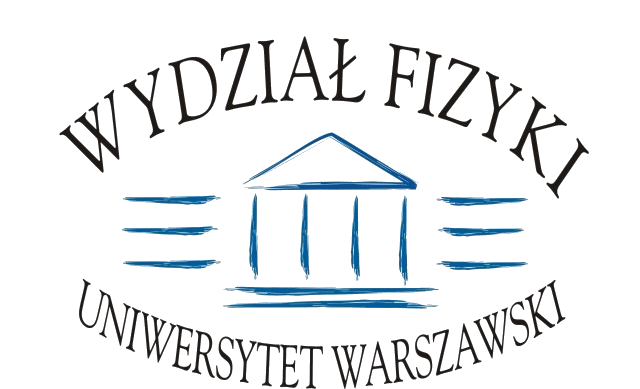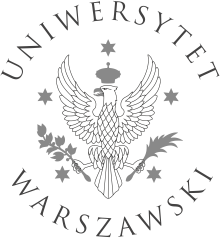Seminarium Teorii Oddziaływań Elementarnych
2006/2007 | 2007/2008 | 2008/2009 | 2009/2010 | 2010/2011 | 2011/2012 | 2012/2013 | 2013/2014 | 2014/2015 | 2015/2016 | 2016/2017
2017-03-20 (Poniedziałek)
Andrzej Dragan (IFT UW)
Ideal clocks - a convenient fiction
2017-03-13 (Poniedziałek)
Malgorzata Worek (RWTH Aachen)
Off-shell Top Quarks with One Jet at the LHC
I will present a study of the production of top quark pairs in association with one hard jet in the di-lepton decay channel at NLO in QCD. All resonant and non-resonant contributions are fully taken into account in these calculations, including irreducible backgrounds to ttj production, interferences and off-shell effects of the top quark and the W gauge boson. I will show predictions for the LHC Run II with a center-of-mass energy of 13 TeV and extensively investigate the dependence of these results upon variation of renormalisation and factorisation scales and parton distribution functions in the quest for an accurate estimate of the theoretical uncertainties. Additionally, I will explore a few possibilities for a dynamical scale choice with the goal of stabilising the perturbative convergence of the differential cross sections far away from the tt threshold. Results that I will present are particularly relevant for searches of new physics as well as for precise measurements of the top-quark fiducial cross sections and top-quark properties at the LHC.
2017-03-06 (Poniedziałek)
Anna Kaminska (U Mainz)
Colored dark sectors
I will present a comprehensive overview of relic density predictions and LHC phenomenology of dark matter models featuring coannihilation with a colored partner in various representations of SU(3). Such models offer a perfect benchmark for discussing how well will the LHC perform in testing thermal dark matter scenarios and whether future colliders will be able to cover the entire relic density motivated parameter space. Several effects relevant for the correct derivation of theory predictions will be discussed – the Sommerfeld enhancement, bound state formation, thermal equilibrium constraints and lifetime of colored dark sector particles.
2017-02-27 (Poniedziałek)
Wojciech Broniowski (JKU Kielce i IFJ Krakow)
Proton-proton hollowness at the LHC
Parameterizations of the pp scattering data at the LHC collision energies indicate a hollow in the inelasticity profile of the pp interaction, with less absorption for head-on collisions than at a non-zero impact parameter. We argue that hollowness in the impact parameter is a quantum effect: it precludes models of inelastic collisions where inelasticity is obtained by naive folding of partonic densities.
2017-01-16 (Poniedziałek)
Dominik Stoeckinger (TU Dresden)
Higgs boson mass: the quest for precise predictions in SUSY models
An important feature of supersymmetric (SUSY) models is that the mass of the SM-like Higgs boson can be predicted as a function of the SUSY spectrum. This allows stringent tests of SUSY models. However, the precision of current theory predictions is far worse than the precision of the LHC Higgs mass measurement. The talk first presents an overview of two general approaches to Higgs mass calculations in SUSY models: fixed-order and effective-field-theory type calculations. It then presents a novel approach, which combines virtues of the two general approaches. The novel approach is called FlexibleEFTHiggs and has been implemented in FlexibleSUSY for a variety of SUSY models, including the MSSM, the NMSSM, and the R-symmetric MRSSM.
The talk discusses in detail the pros and cons of all approaches, the contributions which are taken into account/neglected, and it discusses methods to estimate the theory uncertainty of the existing calculations.
The talk discusses in detail the pros and cons of all approaches, the contributions which are taken into account/neglected, and it discusses methods to estimate the theory uncertainty of the existing calculations.
2017-01-09 (Poniedziałek)
Marcin Badziak (IFT UW and UC Berkeley)
Enhancing the Higgs associated production with a top quark pair
Precision measurements of the 125 GeV Higgs resonance recently discovered at the LHC have determined that its properties are similar to the ones of the Standard Model (SM) Higgs boson. However, the current uncertainties in the determination of the Higgs boson couplings leave room for significant deviations from the SM expectations. In fact, if one assumes no correlation between the top-quark and gluon couplings to the Higgs, the global fit to the Higgs data leads to central values of the Higgs couplings to the top (bottom) quark that are about 2\sigma above (below) the SM predictions. This deviation originates mainly from observed by ATLAS and CMS, in both 8 and 13 TeV runs of the LHC, enhanced Higgs associated production with a top quark pair. We show that this can be explained in the framework of type-II Two-Higgs-Doublet Model (2HDM) supplemented by new light colored particles. As an interesting example, we demonstrate that the observed deviations from the SM expectations can be accommodated in the Next-to-Minimal-Supersymmetric extension of the SM (NMSSM) with light stops. This scenario leads to rich phenomenology of light non-SM-like Higgses with many signatures that are not looked for in existing LHC searches.
2016-12-19 (Poniedziałek)
Piotr Chankowski (IFT UW)
Ultraviolet cutoffs and the hierarchy problem
Guided by the insight from statistical physics I will argue that if the fundamental theory is finite, the effective theory describing physics below the Planck scale should have a built-in real UV cutoff. Consequently I will describe our recent work on renormalization of gauge theories regularized with the help of a a concrete gauge symmetry breaking momentum cutoff. I will show how the RG appears and leads to the definition of the bare action. Using these results I will speculate on a possible way in which the hierarchy problem might be avoided.
2016-12-12 (Poniedziałek)
Leszek Motyka (Jagellonian University)
Soft gluon resmummation in ttH production at the LHC
The Higgs boson production in association with top and antitop quarks probes directly the top Yukawa coupling. Precise measurements of this channel cross section will be possible in the high luminosity mode of the LHC at 13 and 14 TeV. The current uncertainty of theory predictions is mostly due to theoretical uncertainty of the QCD correction. In this talk improvements of the fixed order QCD calculations will be discussed due to all order soft gluon resummations at the NLL and NNLL accuracy. The results will be presented for the differential and total cross section. As the calculations involve a novel application of the soft gluon resummation technique to a 2 to 3 process with two colored particles in the final state, some aspects of this generalization will be discussed.
2016-12-05 (Poniedziałek)
Marc Sher (College William and Mary)
Flavor-changing Higgs Interactions
n the Standard Model and the most popular Two Higgs Doublet extensions, there are no tree-level flavor changing neutral currents. The reason for this is reviewed, and two other models ("model III" and the BGL model) that do have such currents are discussed. Taking the hints of Higgs decays into mu + tau seriously, it is shown that these models could have large branching ratios of heavy Higgs to mu tau (and in the BGL model, the branching ratio could reach 60%). In addition, these models can have a substantial decay of the charged Higgs into mu + nu_tau, leading to a unique (and, to my knowledge, never studied) signature for a charged Higgs.
2016-11-28 (Poniedziałek)
Zapraszamy do udzialu w konferencji DISCRETE2016
informacje na stronie http://indico.fuw.edu.pl/conferenceDisplay.py?confId=46
Stron 2 z 3






